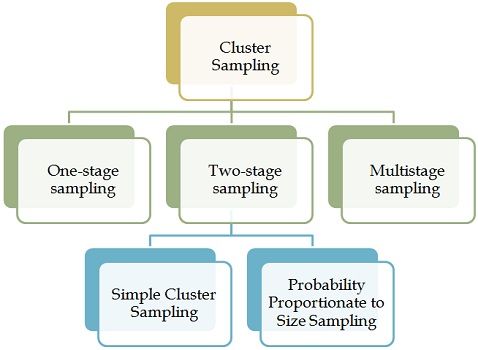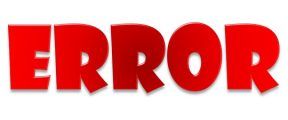 In our earlier article, we’ve discussed probability and non-probability sampling, in which we came across types of probability sampling, i.e. Stratified Sampling and Cluster Sampling. In stratified sampling technique, the sample is created out of the random selection of elements from all the strata while in the cluster sampling, all the units of the randomly selected clusters form a sample.
In our earlier article, we’ve discussed probability and non-probability sampling, in which we came across types of probability sampling, i.e. Stratified Sampling and Cluster Sampling. In stratified sampling technique, the sample is created out of the random selection of elements from all the strata while in the cluster sampling, all the units of the randomly selected clusters form a sample.
In stratified sampling, a two-step process is followed to divide the population into subgroups or strata. As opposed, in cluster sampling initially a partition of study objects is made into mutually exclusive and collectively exhaustive subgroups, known as a cluster. thereafter a random sample of the cluster is chosen, based on simple random sampling.
In this article excerpt, you can find all the differences between stratified and cluster sampling, so take a read.
Content: Stratified Sampling Vs Cluster Sampling
Comparison Chart
| Basis for Comparison | Stratified Sampling | Cluster Sampling |
|---|---|---|
| Meaning | Stratified sampling is one, in which the population is divided into homogeneous segments, and then the sample is randomly taken from the segments. | Cluster sampling refers to a sampling method wherein the members of the population are selected at random, from naturally occurring groups called 'cluster'. |
| Sample | Randomly selected individuals are taken from all the strata. | All the individuals are taken from randomly selected clusters. |
| Selection of population elements | Individually | Collectively |
| Homogeneity | Within group | Between groups |
| Heterogeneity | Between groups | Within group |
| Bifurcation | Imposed by the researcher | Naturally occurring groups |
| Objective | To increase precision and representation. | To reduce cost and improve efficiency. |
Definition of Stratified Sampling
Stratified sampling is a type of probability sampling, in which first of all the population is bifurcated into various mutually exclusive, homogeneous subgroups (strata), after that, a subject is selected randomly from each group (stratum), which are then combined to form a single sample. A stratum is nothing but a homogeneous subset of the population, and when all the stratum are taken together, it is known as strata.
The common factors in which the population is separated are age, gender, income, race, religion, etc. An important point to remember is that strata should be collectively exhaustive so that no individual is left out and also non-overlapping because overlapping stratum may result in the increase in the selection chances of some population elements. The sub-types of stratified sampling are:
- Proportionate Stratified Sampling
- Disproportionate Stratified Sampling
Definition of Cluster Sampling
Cluster sampling is defined as a sampling technique in which the population is divided into already existing groupings (clusters), and then a sample of the cluster is selected randomly from the population. The term cluster refers to a natural, but heterogeneous, intact grouping of the members of the population.
The most common variables used in the clustering population are the geographical area, buildings, school, etc. Heterogeneity of the cluster is an important feature of an ideal cluster sample design. The types of cluster sampling are given below:
- Single-stage cluster sampling
- Two-stage cluster sampling
- Multistage cluster sampling
Key Differences Between Stratified and Cluster Sampling
The differences between stratified and cluster sampling can be drawn clearly on the following grounds:
- A probability sampling procedure in which the population is separated into different homogeneous segments called ‘strata’, and then the sample is chosen from the each stratum randomly, is called Stratified Sampling. Cluster Sampling is a sampling technique in which the units of the population are randomly selected from already existing groups called ‘cluster.’
- In stratified sampling the individuals are randomly selected from all the strata, to constitute the sample. On the other hand cluster sampling, the sample is formed when all the individuals are taken from randomly selected clusters.
- In cluster sampling, population elements are selected in aggregates, however, in the case of stratified sampling the population elements are selected individually from each stratum.
- In stratified sampling, there is homogeneity within the group, whereas in the case of cluster sampling the homogeneity is found between groups.
- Heterogeneity occurs between groups in stratified sampling. On the contrary, the members of the group are heterogeneous in cluster sampling.
- When the sampling method adopted by the researcher is stratified, then the categories are imposed by him. In contrast, the categories are already existing groups in cluster sampling.
- Stratified sampling aims at improving precision and representation. Unlike cluster sampling whose objective is to improve cost effectiveness and operational efficiency.
Video: Stratified Vs Cluster Sampling
Conclusion
To end up the discussion, we can say that a preferable situation for stratified sampling is when the identicalness within an individual stratum and the strata mean to vary from each other. On the other hand, the standard situation for cluster sampling is when the diversity within clusters and the cluster should not vary from each other.
Further, sampling errors can be reduced in stratified sampling if between-group differences among strata are increased, whereas the between-group differences among clusters should be minimised to reduce sampling errors in cluster sampling.







Maryam Baig says
how to cite this page ?
Surbhi S says
“Difference Between Stratified and Cluster Sampling” Keydifferences.com, 20 Jan 2017. <http://keydifferences.com/difference-between-stratified-and-cluster-sampling.html>
sm says
This is extremely helpful and clear – please publish in text books. Thank you for this resource.
Surbhi S says
Thanks a lot for sharing your views.. This means a lot 🙂
Tina says
This is amazing. You’re amazing. THANK YOU
El Jay says
This article helped me a lot. You are amazing
Mohamed Elfatih says
What can I say?
THANK YOU VERY MUCH
Saba says
Extremely Helpful. I was so much confused between these two, None of the books or webpages cleared the confusion. This is the only text that I needed. Thankyou so much. Please keep it up we need it 🙂
Hina says
Thank you so much
justichelle says
So helpful
Jessica says
Wonderful and concise explanation. Very much appreciated. Cheers.
Guojun says
Thank you very much!
Sol the man says
Explained in simple terms specifically for non-statisticians.
Hatem Kotb says
This was helpful, thanks!
Manav says
Your site is great! All the answers and so easily understandable.
ANANIAS SHIRIPINDA says
very good notes, easy to understand and there are precise
nyshant says
Clear and concise. exactly what I needed, especially last-minute of reading in exams. Thanks
sha says
Extremely helpful, clean and easy to understand. thanks
Upendo Nzaligo says
Tried a lot to catch mind of every one, simple language and clear explanation. Congrats
Ismail says
Throughout my years as Statistics, I never had such a simply explicit and clear explanation like this.
Thanks a lot!